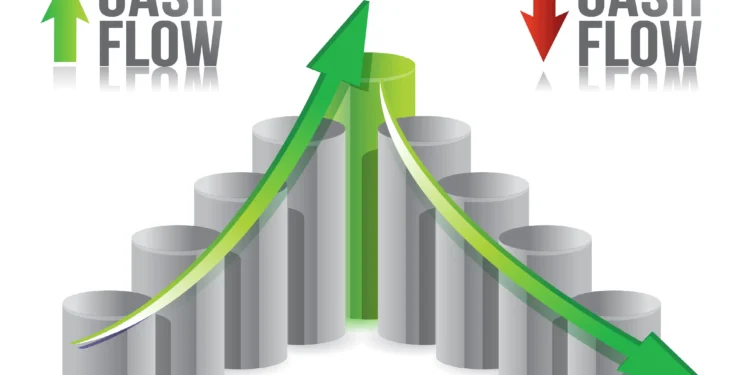Missing cash flow can feel like the silent threat to your business’s stability. One moment, everything seems on track; the next, you’re scrambling to cover unexpected shortfalls. These gaps don’t just disrupt operations—they can jeopardise long-term growth and erode trust with stakeholders.
Cash flow analysis is your most reliable tool for staying ahead of these challenges. By examining the movement of money in and out of your business, you can predict potential shortfalls and take proactive steps to avoid them. It’s not just about survival; it’s about creating a financial safety net that ensures your business thrives, even in uncertain times.
Understanding and mastering this process isn’t as complex as it might seem, and the payoff is invaluable. With the right approach, you’ll gain the insight needed to make informed decisions and protect your financial health. Let’s explore how to make cash flow analysis work for you.
Understanding Cash Flow Analysis
Cash flow analysis dissects the lifeblood of your business—money moving in and out. You might think of it as a diagnostic tool, revealing where financial health thrives or falters.
Importance Of Cash Flow In Business
Strong cash flow keeps your business from veering off course. Without monitoring it, your operations can stumble unexpectedly. Positive cash flow ensures you cover expenses, reinvest smartly, and seize opportunities. Negative cash flow, on the other hand, signals trouble brewing. A missed payment or delayed invoice might strain vendor relationships or stifle growth plans. Watching cash flow closely can offer clarity, letting you forecast risks and pivot accordingly.
Key Components Of Cash Flow Analysis
A thorough analysis breaks apart inflows and outflows. Revenue streams like sales, fees, or rentals inject cash, while overheads such as rent, utilities, or salaries draw funds away. Operating cash flow reflects daily movement, while investing cash flow tracks asset purchases or sales. Financing cash flow captures loans, equity injections, or repayments. Combining these shows how your business runs, grows, and sustains. You should dissect each area to catch trends or gaps before they impact performance.
Predicting Financial Gaps Through Cash Flow Analysis
Cash flow analysis gives a clear view of your financial position, helping you anticipate potential gaps before they arise. By breaking down inflows and outflows, you can detect patterns and prepare effectively.
Tools And Techniques For Accurate Predictions
Using forecasting tools like spreadsheets or accounting software helps pinpoint trends in your cash flow. Cloud-based platforms with real-time updates offer detailed insights, while automation ensures consistency across your reports. Incorporating scenario analysis strengthens predictions by examining varying market conditions or cost fluctuations. Graphs and dashboards illustrate movements over time, letting you visualise potential risks or improvements. Combining historical data with these techniques can reveal seasonal patterns and cyclical differences that impact forecasts.
Identifying Red Flags In Cash Flow Trends
Spotting red flags early can prevent disruption. Watch for consistently negative net cash flow, which might signal operational inefficiencies. Late customer payments weaken liquidity and gradually lead to funding gaps. Increasing reliance on credit indicates trouble managing operational expenditure. Irregular spikes in accounts payable or receivable often hint at poor cash management. If expenses regularly outweigh revenue, reassess budgeting practices to understand underlying issues. Tracking these red flags lets you mitigate risks before they escalate into financial gaps.
Preventing Financial Gaps With Proactive Measures
Proactive methods are key to avoiding financial disruptions. By taking targeted steps, you can prevent gaps and maintain steady operations.
Creating A Cash Flow Forecast
Establishing a forecast offers clarity on your financial outlook. A cash flow forecast tracks expected inflows and outflows over a period, helping you pinpoint when funds may run short. Regularly updating your forecast keeps it accurate and actionable. Aim to factor in fixed costs, variable expenses, and anticipated revenue from all sources. You might use tools like spreadsheets or dedicated software for this, as they streamline calculations. Tracking unforeseen changes, whether positive or negative, ensures you adapt your financial strategies in time.
Strategies To Maintain Positive Cash Flow
Maintaining positive cash flow protects your business from financial strain. You could negotiate longer payment terms with suppliers while encouraging customers to pay promptly, using discounts if needed. Regularly reviewing operating costs helps identify unnecessary expenses to reduce. Build a cash reserve to cover shortfalls, especially during periods of lower revenue. Diversifying income streams strengthens cash flow resilience, spreading financial risks across multiple sources. By streamlining invoicing processes and staying vigilant about overdue payments, you reinforce your financial foundation, ensuring gaps don’t occur unexpectedly.
Benefits Of Regular Cash Flow Monitoring
Regular cash flow monitoring acts as a financial compass, guiding you through complex business landscapes. It uncovers insights that sharpen your strategy and strengthen your financial standing, ensuring smoother operations.
Improved Decision-Making
When you maintain close oversight of cash flow, decision-making turns into a targeted process. You can identify profitable opportunities or avoid overextending resources with precision. Monitoring cash flow regularly lays out patterns, helping you forecast operational needs before challenges arise. For instance, short-term gaps or sudden surges in expenses might point you towards revisiting budgets or adjusting spending. If cash inflows falter while outflows rise, decisions to delay investments or renegotiate payment terms emerge naturally. With this clarity, your decisions align with actual financial realities, sharpening outcomes and reducing risks.
Long-Term Financial Stability
A steady focus on cash flow supports the structural balance of your business over time. By detecting potential threats like recurring deficits or unsustainable costs early, you set the stage for stability. If growth plans rest on unpredictable cash fluctuations, the risk of setbacks increases. Regular monitoring equips you to respond swiftly, such as reining in discretionary spending when revenue streams shrink. When margins for error shrink, sound strategies like building emergency reserves come into play. This vigilance protects your financial health, enabling you to scale up operations or seize opportunities without overexposure to risk factors.
Challenges In Cash Flow Analysis
Cash flow analysis, while essential, comes with its own set of hurdles. You might find that figuring these challenges requires a sharp eye and consistent effort.
Common Missteps To Avoid
Relying on outdated or incomplete data often leads to inaccurate forecasts, leaving your financial planning vulnerable. Ignoring irregular inflow patterns, like seasonal variations or unpredictable client payments, can distort your analysis. Overlooking small expenses might seem harmless, but they accumulate and erode your cash position. Misclassifying transactions, such as blending personal and business expenditures, can skew results and complicate financial decisions. Focusing too heavily on short-term gains without monitoring long-term cash trends risks leaving gaps unnoticed. Avoiding these pitfalls is critical to more effective cash flow management.
Solutions To Overcome Analytical Challenges
Integrating accounting software can simplify how you track inflows and outflows, reducing the risk of errors. Regular updates to your data help reflect the most accurate picture of your financial situation. Analysing historic records enables you to identify patterns in recurring revenue or costs, improving forecasting accuracy. Seeking expert advice, whether through financial consultants or online resources, adds clarity to more complex cash flow scenarios. Breaking analysis into smaller, more manageable periods, such as weekly rather than monthly, ensures greater precision. Emphasising routine reviews keeps you informed and better prepared for sudden financial shifts.
To Conclude
Cash flow analysis is a powerful tool that equips you to figure out financial uncertainties with confidence. By adopting a proactive approach and leveraging the right strategies, you can identify potential risks, seize opportunities, and maintain a strong financial foundation.
Effective cash flow management isn’t just about avoiding gaps; it’s about empowering your business to thrive. With consistent monitoring and informed decision-making, you’re better positioned to protect your operations and achieve sustainable growth.





